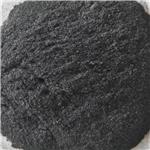description
Tungsten hexacarbonyl is easily vaporized and decomposed by the electron beam — providing a convenient source of tungsten atoms. This product is widely used in electron beam-induced deposition processes, it is also used as a precursor to catalysts for alkene metathesis and to desulfurize organosulfur compounds. It is relatively air-stable, and it is sparingly soluble in non-polar organic solvents. W(CO)6 reactions begin with the displacement of some of its CO ligands. Similar to Mo(CO)6 in behavior, W(CO)6 typically forms compounds that are kinetically more robust. Synthesis of this product are reported (see the links below).
uses
Tungsten hexacarbonyl, [W(CO)6] may be used as a precursor for the deposition of WO3-x films, which may be used as gas sensors for the detection of NO2.
Precursor to a Fischer carbene complex which reduces Pd(II) to nanoparticulate Pd(0) that is catalytically active in Hiyama cross-coupling.
Reaction
Volatile starting material used for the atomic layer deposition of tungsten oxide, tungsten nitride.
Tungsten hexacarbonyl is used to produce tungsten coatings on base metals. This is done by deposition of the carbonyl on the metal surface, which decomposes to leave a tungsten coating.
Preparation
Tungsten hexacarbonyl is produced by heating tungsten metal with carbon monoxide at high pressure. Also, carbonyl can be prepared by reducing the tungsten hexachloride by heating with iron powder under carbon monoxide pressure.
Chemical Properties
White, volatile, highly refractive, crystalline
solid. Decomposes without melting at 150C.
One of the more stable carbonyls. Insoluble in water; soluble in
organic solvents.
Physical properties
White crystalline solid; density 2.65 g/cm
3; decomposes at 170°C without melting; sublimes; vapor pressure 0.1 torr at 20°C; insoluble in water; soluble in most organic solvents.
Uses
It is used as a catalyst in many organicsynthetic reactions.
Uses
Tungsten coatings on base metals by deposition
and decomposition of the carbonyl.
Uses
Tungsten Hexacarbonyl is an useful catalyst in carbonyation amines, as well as an stable source of tungsten atoms through electron beam-induced depostion.
General Description
Atomic number of base material: 74 Tungsten
Health Hazard
Toxicity of this compound is not reported.Although air stable at ambient temperature,upon heating it emits toxic carbonmonoxide. Chronic exposure to its vaporsor dusts can cause bronchitis. Ingestion islikely to produce the toxic effect of tungstenoxides.
Fire Hazard
It explodes when heated to high temperature.
Solution in ether can explode if stored for a
long time.
reaction suitability
core: tungsten
reagent type: catalyst
Purification Methods
Sublime it in vacuo before use [Connoe et al. J Chem Soc, Dalton Trans 511 1986]. TOXIC.




